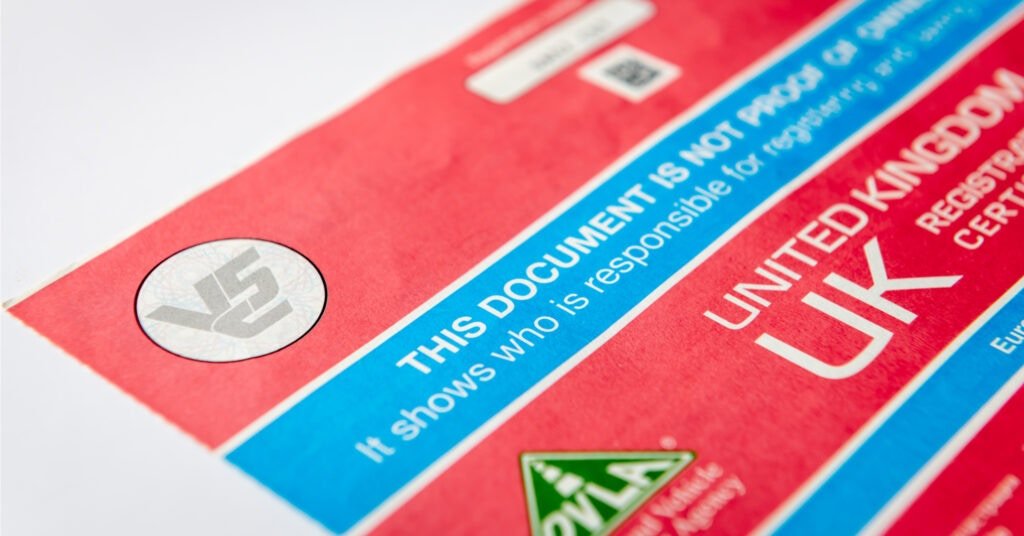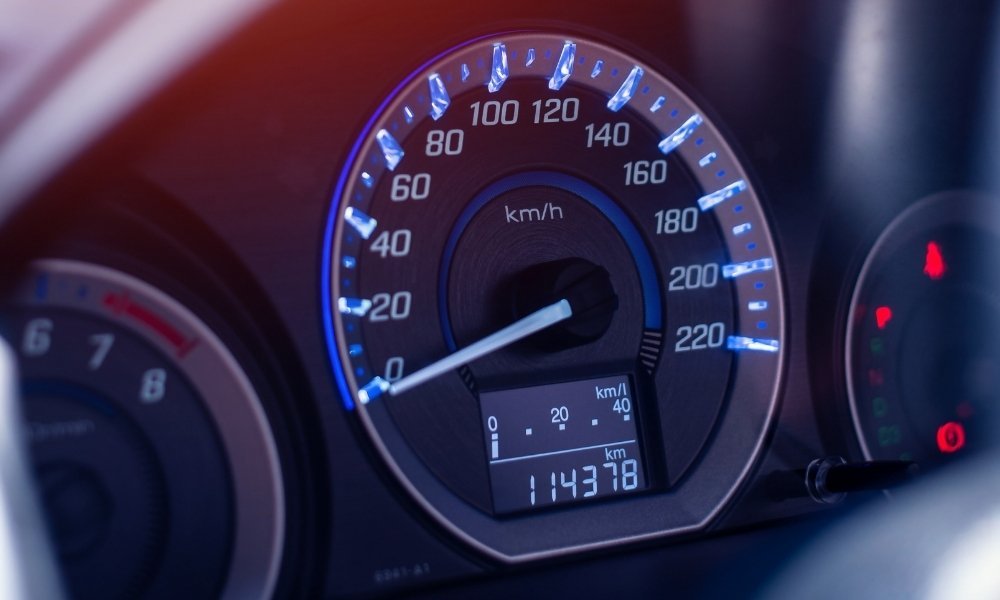If you own a car in the UK, you're likely to have a V5C, often known as a vehicle logbook. While it may not seem like a huge deal, this red document contains important information about your vehicle and the registered keeper. It is not proof of ownership, but it does indicate who is responsible for things like taxing the vehicle and keeping its information up to date. Whether you're selling, buying, or just updating your information, the V5C is an important document that makes these procedures much easier. Let's dive into what is a v5 Certificate is and why it is so important and what you should know about it.
What Does a V5C Logbook Look Like?
What does a v5c look like? The V5C logbook is an official printed record that every UK car owner should have. It's a scarlet slip of paper roughly the size of a standard letter that contains critical information about your vehicle. The logbook includes information such as the car's brand and model, registration number, and Vehicle Identification Number (VIN). It also includes the name and address of the currently registered keeper. You'll notice that it's divided into sections, with each section providing a different type of information, such as previous owners' information and car record updates. It's essential to keep this document safe, as it plays a key role in managing your car's paperwork, including taxing and selling it.
What Information Is Included on a V5C?
Section 1: Vehicle Details
This section contains things like the car's make, model, registration number, and Vehicle Identification Number (you can find VIN number here). Other details include the engine size, fuel type, and colour.
Section 2: Registered Keeper
Here, you will find the name and address of the car's registered keeper; this is the person in charge of ensuring that the car is taxed and that all records are up to date. If the vehicle has had previous owners, their information may also be included.
Section 3: Special Notes
This section is for any additional information on the car that could be important. It could include information like whether the vehicle was imported, used as a taxi, or had any special modifications. This provides more context about the car's history.
Section 4: Changes to Vehicle Details
If any information about the vehicle changes, such as its colour or engine, this section allows the current owner to notify the DVLA; it helps keep the vehicle's records accurate and up to date.
Section 5: Previous Keeper(s)
If you're purchasing or selling a car, this section provides information about any prior owners. It lists their names, addresses, and the dates they possessed the car; knowing the car's previous owners can be useful when purchasing a used car.
Section 6: New Keeper, New Name/New Address Details
If you have purchased the vehicle or the keeper's details need updating, this section will be filled out with the new keeper's name and address. It’s essential for transferring ownership or personal details log book change.
Section 7: New Keeper Declaration
When ownership of the vehicle changes hands, both the existing and new owners must sign this section to confirm the transfer; this is an important step to make sure that the DVLA gets the right information.
Section 8: Motor Trader Notification
This part is used by motor traders when they acquire a car. It contains the motor trader's address and signature. This is important when a car is sold by a dealership or traded in.
Section 9: Notification of Sale or Transfer to a Motor Trader, Insurer, or Dismantler
After the vehicle is sold or transferred to a motor trader, insurance, or scrapyard, this section must be filled out and sent to the DVLA; it contains both the buyer's information and the seller's signature.
Section 10: New Keeper's Supplement (Green Slip)
This v5c green slip is a tear-off section that the new keeper will keep until they receive the updated logbook. It acts as temporary proof of ownership and can be used to tax the vehicle or perform other tasks in the meantime.
When and Why You Should Update Your V5C?
You do not need to update your V5C on a regular basis unless your car's ownership or details change. However, there are several scenarios in which you must request a new one.
If you change your address or name, make sure to update or change V5C. Similarly, if you've made significant changes to the vehicle, such as changing its colour, converting it to a different fuel type, or adding more seats, you should update the logbook.
If you give the car to someone in your household or a family member, you must complete the new keeper slip exactly as you would when selling a car. Similarly, when selling your vehicle, the V5C must be updated. If it's a private sale, you must complete sections six and eight. Section nine is required for sales to a motor trader, insurer, or scrapping.
If you no longer own the car, you should not keep the V5C; otherwise, you may be held accountable for any parking tickets or speeding fines issued to the new keeper.
How to Change the Address on Your V5C Logbook?
1. Updating the Address Online
If you’re the registered keeper of a vehicle and need to update your address, the most straightforward method is to use the DVLA’s online service. To complete the process, you’ll need two things on hand: the registration number of your vehicle and the 11-digit reference number found on your V5C logbook. Please keep in mind that this service is only available to addresses in the United Kingdom; residents of the Channel Islands or the Isle of Man are not eligible. In addition, if the car needs to be taxed within the next four weeks, you must tax it before changing your address.
2. Updating the Address by Post
This involves filling in your new address details in Section 3 of the current V5C and posting the entire document to the DVLA at the address printed in the logbook. If you have an older logbook (pre-2012), you will need to update your address in section six; this procedure is free of cost.
How the V5C Is Used When Purchasing a Car?
Before agreeing to buy a car, it’s important to look over the V5C logbook carefully. This document shows who the registered keeper is, so make sure the seller’s name and address match what's listed; you can use our
car reg checks to get the car’s history. While it is not your job to update the V5C, you should make sure that the seller has done so correctly.
Selling a Car: V5C Responsibilities and Process
When selling a car, it is your job as the seller to complete the green 'new keeper' form and provide it to the buyer. After that, you must tell the DVLA of the new owner's information, either using the government's online facility or by mailing the V5C. This makes sure that the DVLA has correct information and updates the vehicle's ownership record.
Lost Your V5C? Here's What to Do
If your V5C logbook has been lost, stolen, or damaged, it’s important to act quickly. You can apply for a replacement online through the government’s website or by calling the DVLA. If the original was destroyed or stolen, you may also need to fill out a V62 form.
There’s a £25 charge for a replacement. You’ll need to provide the car’s registration number, VIN, and your name and postcode. Once processed, the new V5C will arrive within five working days. If you haven’t received it in two weeks, it’s a good idea to call the DVLA. If you still haven’t received it after six weeks, you’ll need to pay for another replacement.
How to Apply for a V5 Certificate Logbook?
To get a replacement V5C, apply online at the government website or call the DVLA. You’ll need your car’s registration number, VIN, chassis number, and your address. The new logbook will be sent to the registered address. It’s needed for taxing your vehicle, so don’t delay.
V5C FAQs
Is It Possible to View Your V5C Online?
No, you can’t view your actual V5C logbook online because it’s a paper-based document issued by the DVLA. Although the logbook itself isn’t digital, there are online tools such as our car reg checks that can let you check some of the vehicle’s basic details.
Can You Sell a Car Without the V5C Document?
Technically, yes—you can sell a vehicle without having the V5C in hand, but it’s not recommended. Without it, buyers may be wary, and the sale could take longer. If the V5C is lost, it’s best to apply for a new one using a V62 form before listing the car. Selling without one also means extra paperwork, as you’ll need to inform the DVLA separately to avoid being held responsible for the car after it’s sold.








